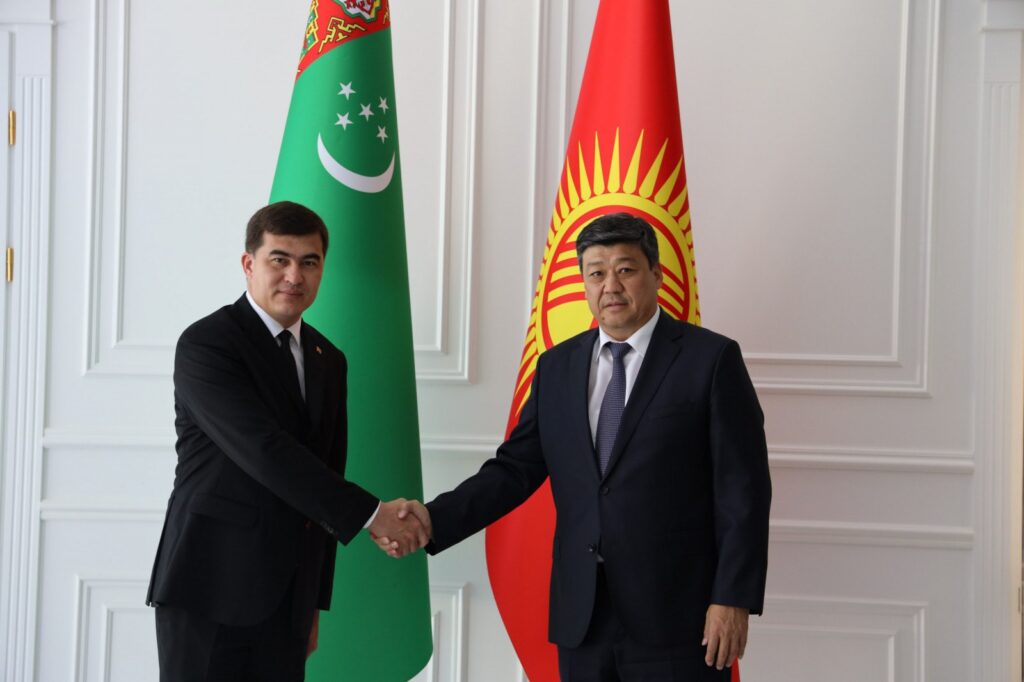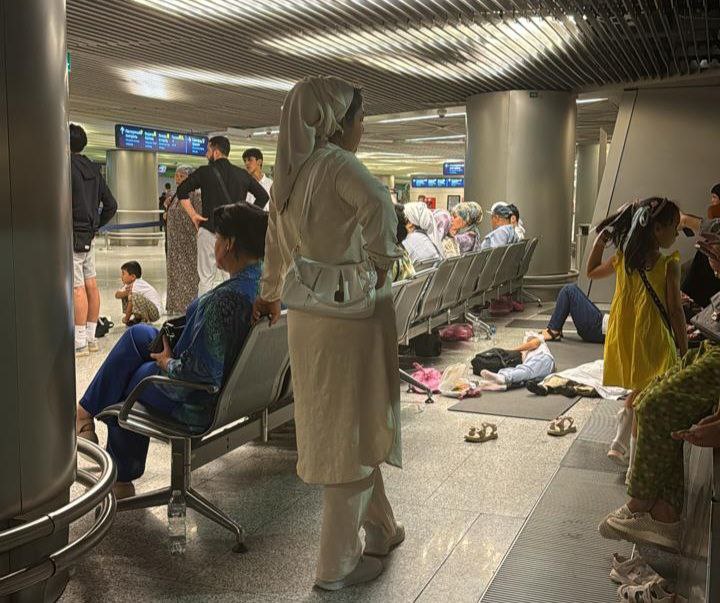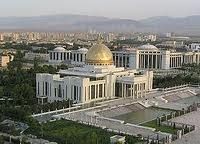BISHKEK (TCA) — As state power succession remains an issue for post-Soviet Central Asian republics, especially for Kazakhstan, we are republishing this article, originally published by Stratfor, that presents the political outlook for each of the region’s five countries:
Central Asia is changing. In October, Kyrgyzstan had its first peaceful transfer of power from one elected president to another. Less than a year earlier, Uzbekistan’s succession of power unfolded in a similarly peaceful manner. And in recent months, Kazakhstan’s own long-serving president has made preparations for his eventual succession. These developments contrast with the volatile political transitions that came earlier in Central Asia’s post-Soviet history, namely two violent revolutions in Kyrgyzstan, a bloody civil war in Tajikistan and an unexpected succession in Turkmenistan. The widespread instability expected as a result of Uzbekistan and Kyrgyzstan’s political transitions hasn’t — at least, not yet — come to pass. These more stable transitions are significant, given Central Asia’s importance as an oil and natural gas-producing region, a hotspot for militancy, and a locus of strategic interest for foreign powers such as Russia, China and the United States.
The question to be asked is whether political transitions in Central Asia — and the political systems of these countries in general — have stabilized and entered a new, less volatile state of normalcy? The answer is more complex than the seemingly smooth changes taking place would suggest. In fact, the political outlook for each country varies greatly, with associated implications for the region and beyond.
Kyrgyzstan: Breaking a Vicious Cycle
In the first two decades of the post-Soviet era, Kyrgyzstan had the distinction of being the most unstable state in Central Asia. The country experienced two revolutions in the span of five years, witnessing a violent overthrow of governments in 2005 and 2010. In addition, Kyrgyzstan succumbed to major bouts of violence between ethnic Kyrgyz and Uzbeks in the early 1990s and in 2010.
But 2010 also proved to be a turning point for the country: The April revolution, swiftly followed by ethnic riots in southern Kyrgyzstan in June, left the country seeking a new direction to end the vicious cycle of violence and instability. Former Foreign Minister Rosa Otunbayeva became acting president, overseeing political reforms that included transitioning the country to a parliamentary system of government and establishing a single term limit for presidents. She voluntarily relinquished power in December 2011 when Almazbek Atambayev won the presidential election, which was largely open and free.
The presidential election in 2017 was peaceful, too, with Atambayev transferring power to Sooronbay Jeenbekov. Though protests continue to be a mainstay of Kyrgyz politics, the transition of power has become smoother, and violent demonstrations and ethnic clashes have subsided. Thus Kyrgyzstan’s political system has stabilized in recent years and the country appears poised to avoid the widespread political instability that plagued its earlier history.
Nevertheless, other factors that will continue to trouble Kyrgyzstan moving forward. It has a weak economy that relies on remittances; it has border and resource disputes with Uzbekistan and Tajikistan, and it faces the pervasive threat of militant attacks. Furthermore, Russia and China are beginning to compete more intensely for influence in the country.
Uzbekistan: Embarking on Ambitious Reforms
The sudden death of longtime President Islam Karimov in 2016 led to widespread concerns that Uzbekistan could fall into political chaos. The country, after all, had been ruled by Karimov through the entirety of the post-Soviet era, and the leader had established a careful balance among Uzbekistan’s regional clans — as well as the business and security elites — under his own highly centralized rule. An unclear line of succession following Karimov’s unexpected death contributed to fears that any process to replace him would inevitably lead to instability in the country.
But those fears haven’t come to pass, as of yet. Shavkat Mirziyoyev, who served as Karimov’s prime minister from 2003, quickly took hold of the reigns of power. Mirziyoyev was able to maneuver between major power players, such as security services chief Rustam Inoyatov and former Finance Minister Rashid Azimov, to become acting president. He then formalized his rule by winning the presidential election in December 2016 with nearly 90 percent of the vote. Mirziyoyev has since embarked on an ambitious reform drive, which included opening the country up to monetary liberalization and foreign investment, strengthening relations with Kyrgyzstan and Tajikistan, and increasing security ties with Russia.
The speed and intensity of Mirziyoyev’s reform efforts have, however, led to a fractious relationship with the more conservative security forces, led by Inoyatov. Crackdowns against religious and opposition elements continue despite Mirziyoyev’s best efforts, and certain reforms — such as visa liberalization for Western countries — were actually reversed or postponed. Clearly, Mirziyoyev hasn’t fully consolidated his rule, and this could lead to greater political instability in the country. Moreover, Uzbekistan will have to contend with a rapidly growing population, placing further strain on the country’s resources, and the threat of militant attacks being perpetrated by ethnic Uzbeks both inside and outside its borders.
Kazakhstan: Ending a Political Career
What’s happening in Uzbekistan is being closely watched by Kazakhstan, which has its own political succession looming. President Nursultan Nazarbayev has led Kazakhstan since the Soviet Union collapsed in 1991. At 77 years old, he’s nearing the end of his political career. Nazarbayev himself has strongly hinted as much, announcing in January that a working group is actively discussing the redistribution of certain powers — including economic policy setting — from the office of the president to the parliament.
But Nazarbayev has yet to identify who specifically will succeed him as president. Unlike Uzbekistan, there is no long-serving prime minister well positioned to replace Nazarbayev — Prime Minister Bakytzhan Sagintayev has only held the office since 2016. There are other power players in the country, including Nazarbayev’s daughter, Dariga Nazarbayeva, son-in-law Timur Kulibayev, former Prime Minister Karim Massimov, and Senate Speaker Kasym-Zhomart Tokayev, who are seen as leading contenders for succession. It’s possible, even likely, that a power arrangement could be (or already has been) worked out between the political and business elites to avoid major disruptions in the country.
Nevertheless, without an overwhelming favorite to succeed Nazarbayev, Kazakhstan could undergo a turbulent transfer of power when it comes to pass. And even if the transition goes smoothly, Kazakhstan’s energy-dependent economy is still prone to price swings, while militancy remains a persistent and heightened threat.
Turkmenistan: Challenging a Powerful Position
Turkmenistan already went through a major power transition in 2006 when long-serving leader Saparmurat Niyazov died suddenly. Gurbanguly Berdimuhamedow, a little-known health minister at the time, surprised many by taking over as acting president instead of the constitutionally appointed chairman of the Assembly of Turkmenistan. Berdimuhamedow subsequently won the 2007 presidential election with 97 percent of the vote. He solidified his power over the past decade, winning elections in 2012 and 2017 with a similar margin, eventually instituting constitutional changes to ban presidential term limits.
Despite Berdimuhamedow’s consolidation of power and the lack of apparent political challengers to his rule, he’s nevertheless facing growing pressure as a result of worsening economic conditions in the country stemming from low global energy prices. (Turkmenistan, like other Central Asian countries, is a major producer and exporter of natural gas.) The Turkmen government has had to reduce or phase out subsidies for electricity, gas, and water, while anecdotal reports of food shortages and rations reductions for military conscripts indicate that social pressure in the country is growing. Even without major political competition, underlying problems in Turkmenistan could eventually challenge Berdimuhamedow’s position.
Tajikistan: Masking Substantial Uncertainty
Of all the Central Asian states, Tajikistan had the most turbulent period in the immediate post-Soviet era. Succumbing to a brutal civil war waged between various clans and power factions from 1992-1997, tens of thousands were left dead. Tajik President Emomali Rakhmon emerged victorious from the war and has led the country in strongly centralized fashion ever since. Rakhmon won all presidential elections since taking office by a large margin and has recently overseen constitutional changes that eliminate presidential term limits, enshrining his rule.
As with Turkmenistan, the lack of effective political opposition to Rakhmon’s government masks problems looming beneath the surface. Periodic confrontations between security forces and anti-Rakhmon rebels have occurred in places like Khorug and the Rasht Valley — strongholds in the eastern part of the country since the civil war. Resentment over crackdowns against religious groups and practices is also growing. Thus, while Rakhmon doesn’t face any direct challenges related to political succession, his entrenched rule could increase instability in the country in the future.
The Pressing Question
Returning to the original question, have political transitions stabilized in Central Asia? Evidently, there is no single answer. Some countries are much more politically stable than in years past. Others face a great deal of instability lurking beneath a surface of apparent calm. Still others could have their most politically volatile periods ahead of them.
Consequently, there are considerable differences in the political outlook for the various Central Asian states, though they share certain common factors, including growing socio-economic pressures and intensified competition from regional players such as Russia and China. These factors will make it difficult for Central Asian countries to avoid prolonged instability, no matter how well positioned they are in managing their political transitions.








